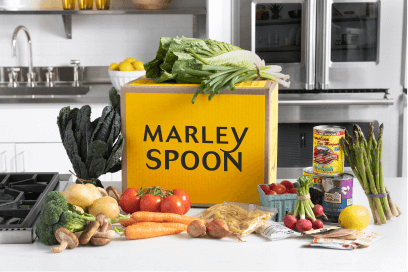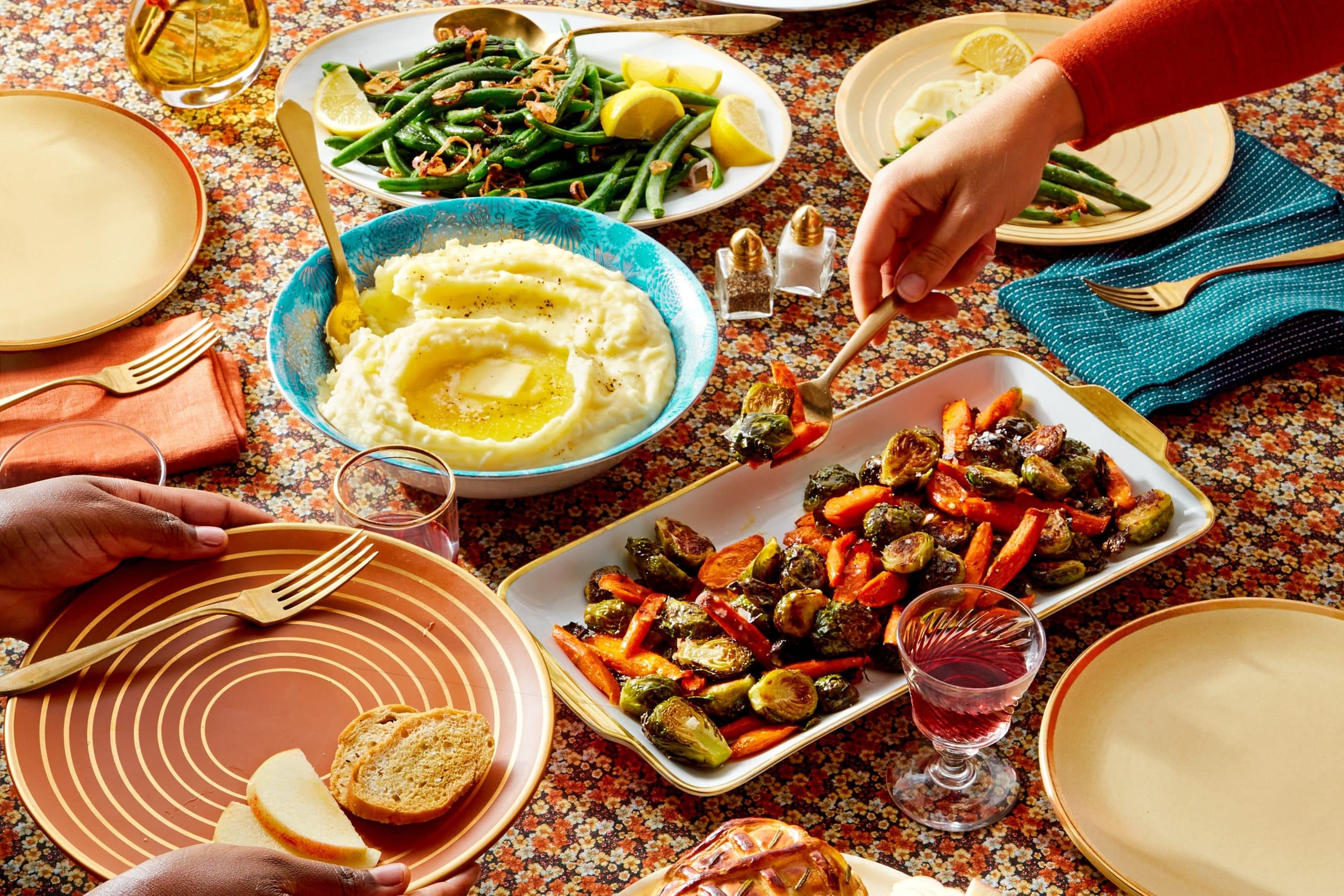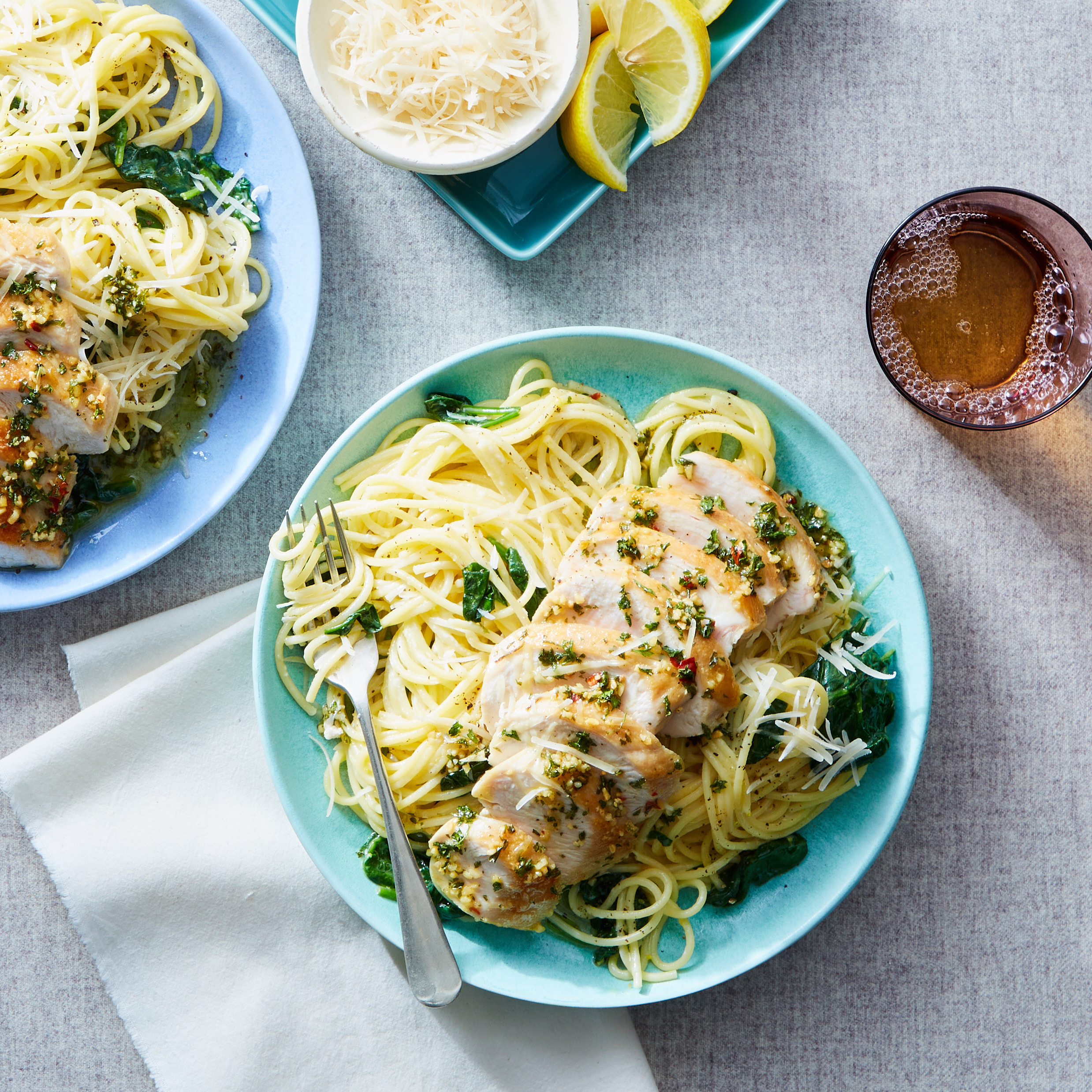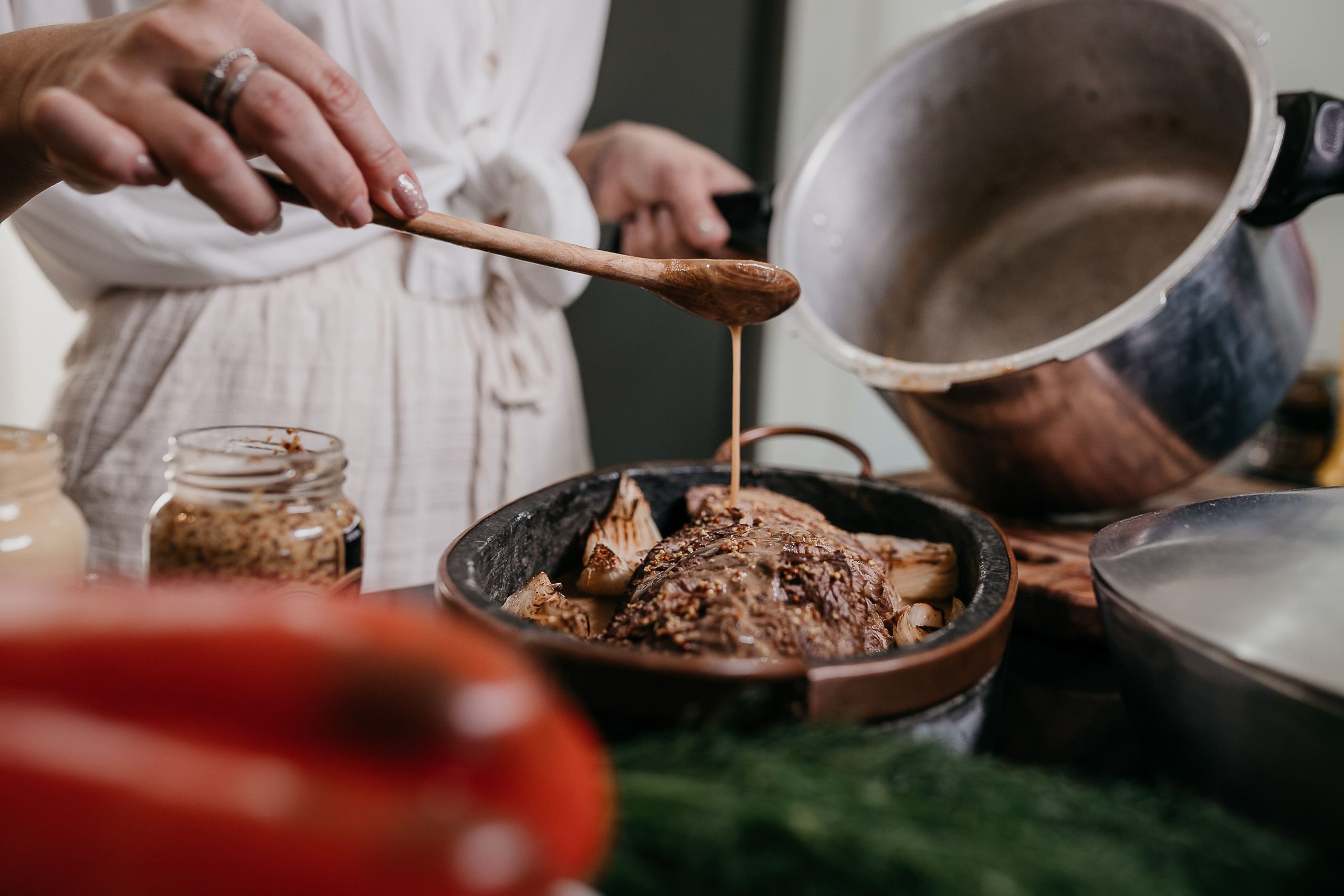So it’ll come as no surprise that polenta, originally from Northern Italy, is simply cornmeal cooked in water. In other words, cornmeal porridge, but not to be confused with grits, which are made with a different type of corn.
We love polenta for its brilliant egg-yolk color and subtle sweet aftertaste, and for how versatile it is, happily eaten either sloppy and hot in a deep bowl or firm, sliced and pan-fried. Polenta is one of the few foods that works well for breakfast, lunch or dinner. It can be eaten with the saltiest of cheeses and mounds of ragú or swirled with cream, sugar and raisins. It can be a humble side dish, seasoned lightly and peeking from the corner of a table, or it can hold its ground as the star grain of your meal.
New to Marley Spoon? Sign up today with our most popular discount voucher in 2022
To help you in your polenta forays, we’ve answered a few burning questions (also, we’re always looking for ways to stretch and transform one ingredient):
What happens if my polenta starts to firm up while I’m cooking?
You may have noticed that if you forget about your polenta for even a few minutes it can become lumpy as it cools. If this happens, return your pot of polenta to the stove over low heat and whisk in a little water, milk, cream or stock to loosen it up. Start with a tablespoon at a time until you reach the desired consistency. It should be smooth as cake batter.
How can I boost the flavor of my polenta?
In our recipes we often ask that you make the polenta with water, salt and butter. We try to keep it simple so you can get dinner on the table in a half hour or less. But if you happen to have other ingredients in your pantry, and if there’s time to spare, here are a few polenta flavor boosters:
-
Stir in dairies such as mascarpone, cream cheese, grated cheese or butter for added richness.
-
Chop a tablespoon of fresh thyme, rosemary, parsley, sage or dill and stir in. If you don’t have any fresh herbs, a dust of lemon zest and freshly cracked black pepper will add zing along with a hint of spice.
-
Whisk in homemade pesto or a quick kale purée for a vibrant green polenta.
-
Spread your polenta in an oven-proof skillet, top with cheese (a softer and nutty cheese such as taleggio works well, but if you want more punch try an extra-sharp cheddar or Pecorino) and broil for a few minutes until golden and bubbling.
-
Make a quick garlic butter and pool onto your bowl of polenta as you would olive oil on hummus.
What if I have leftover polenta?
If you have extra polenta once you’ve plated your meal, or if you decide to make double, then pour whatever is left into a shallow baking dish, cover and refrigerate overnight. In the morning it’ll be firm and easy to slice. You can cut the polenta into circles, squares or diamonds andsauté in olive oil in a nonstick pan. Top with an egg or any sauce, or pan fry alongside greens, or even better, a medley of mushrooms!
One last tip:
For a shorter cooking time we send you quick-cooking or instant polenta, but we recommend you try your hand at traditional polenta. It’ll take you about an hour from beginning to end, but it’s much less labor intensive than it seems. Check the package for water to polenta ratio. Stir once every five minutes to keep the bottom from sticking and burning. If a skin forms on the surface, whisk until dissolved and smooth again. Cook your polenta over low heat so it doesn’t spit hot bubbles of steam onto your arms. Check for thickness in the last ten minutes of cooking: whisking shouldn’t come too easily, the gruel should provide some resistance. A watery and thin polenta won’t be pleasing. We’re looking for a thick, creamy consistency. While we sometimes like to cook our polenta in broth for a savory flavor, we’re fans of starting with water and salt, and then whisking in additions.
Written by Sanaë Lemoine





